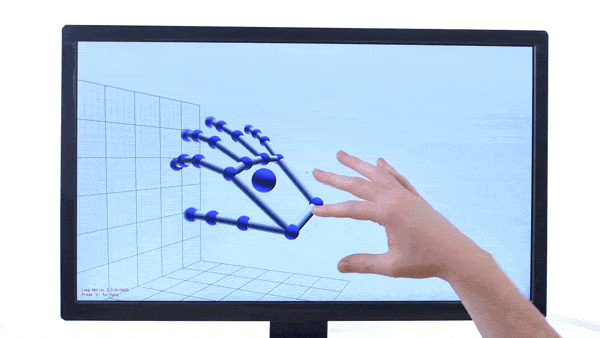In 2012, a team from the Rochester Institute of Technology/National Technical Institute of the Deaf designed a prototype that would not be manufactured until the summer of 2015. The prototype that took years of development was named UNI. UNI is an electronic, portable tablet that creates communication between the deaf and hearing, the "first sign language to voice system." The UNI tablet watches American Sign Language (signed with one hand or both hands) and turns it into text that is read aloud for a hearing person to listen to what that person signed.
UNI will also listen to words spoken and turn them into a text for a deaf person to read. The beauty of this product is that it can be used by both deaf and hearing. It is a new type of technology that has changed the line of communication between deaf and hearing children or adults in the workplace, with family, teachers, or even with friends. The product has yet to manufacture enough to sell as of right now, but there are a few of these made, and the team from Rochester are working to perfect it for users.
Although UNI makes communication easier, it is also a great product for learning American Sign Language. If the tablet is something that you would not like to purchase, you can also purchase the program that UNI uses and download the MotionSavvy program on your computer to practice when you are at home. The program comes with a camera if your computer does not have one, and it shows the signs on the screen with a digital hand so you know if you are signing correctly or not. The technology team hopes to get the program onto Android and iOS devices in the near future. One interesting fact about UNI is that it also allows new signs (ex. name or city signs) to be made and remembers the sign for future use.
Prices will vary, one tablet is $198 with a $20 per month subscription for the program. You can donate one to a child that needs one for $399, and it comes with a year subscription (to the MotionSavvy program) that is paid for. Businesses can also purchase UNI, five of the tablets for $2,000 and each one comes with the paid subscription for the workplace.
Another concept that was brought up was that, "The tablet may not be able to pick up faster paces with signing and talking, and people have different accents. Also, one sign can mean multiple words in English, how would we know what is trying to be said?" He added that, "The tablet might allow a conversation to flow the way it should for a casual conversation but not for more serious discussions like in medical situations."
An important term to think about during all of this is prosody. Prosody by definition is the means for reading with expression and this is just one feature of oral reading efficiently. This is essential because it shows the difference between syntactic (for phrasing) and emphatic (for interpretation) prosody. So overall, facial expressions during a conversation are a big part of sign language.
This new technology does allow a deaf person to stay part of their culture and communicate in a way that they are comfortable with and grew up with. Years ago, deaf children were sent to deaf schools to learn how to communicate orally and read lips, which is much more difficult than signing. Deaf children/adults were considered disabled and not "normal," since "normal" was considered having the hearing ability.
Recently, families have started to teach their toddlers sign language as a way for them to communicate with the parents because they are not talking yet; it is becoming more popular every day because of how simple it is, simple yet beautiful. Children can also learn from educational programs such as "Sesame Street." There are other television shows for adults, a more popular one is "Switched At Birth" on ABC Family. These are great ways to learn some American Sign Language and about the deaf culture.
That is why the UNI is so remarkable, it creates a window that lets the deaf culture stay who they are and breaks those communication walls. Plus, it gives an opportunity to learn the language so that one day the tablet would not have to be needed for communication.
Here is a link to the video that was uploaded on Oct. 21, 2014 that shows how to use the MotionSavvy UNI. This video was during the Indiegogo Launch, which was before the final prototype was made up.
"As someone who isn't deaf or fluent in ASL, it’s hard to fully appreciate what the UNI tablet could mean for many. Still, the potential implications are clear. "–– Ars Technica: Cyrus Farivar

























